Aquatic plants are an important component of an aquatic ecosystem, providing habitat for fish and waterfowl. However, when fast-growing plant species become well established, they can reach nuisance levels. This occurs when aquatic plants impact common uses of an impoundment such as hydropower production, recreation, or navigation. Management of aquatic vegetation is necessary to maintain the value of multiple uses in many large reservoirs where nuisance levels of aquatic plants have been reached. An example of a nuisance aquatic plant in our area is Hydrilla verticillata, commonly referred to as hydrilla.

 Alligator Weed (Amaranthaceae)
Alligator Weed (Amaranthaceae)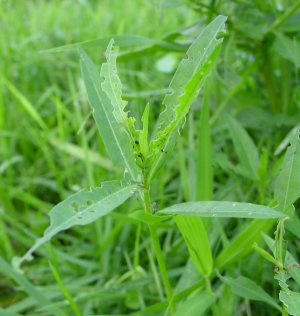
Alligator Weed grows in a wider range of water and soil conditions that any other aquatic plant. This plant is native to South America and was probably brought to the US in the ballest of ships. The plant forms thick mats in water replacing native species and can result in fish kills and prevent recreational use as well as slow drainage that may cause flooding.

 Common Salvinia (Salvinia minima)
Common Salvinia (Salvinia minima)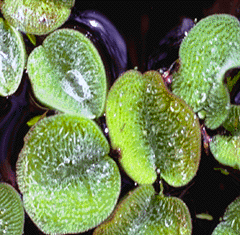
The Common Salvinia plant is a floating fern and is not native to the United States. This species is about 3/4 inch in width and occurs in still waters having high organic content. It has joined oval leaves covered with stiff hairs on its leaf surface. It has a root like structure which is actually modified fronds.

 Cuban Bulrush (Scirpus cubensis)
Cuban Bulrush (Scirpus cubensis)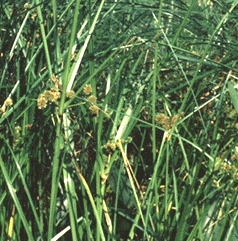
Cuban Bulrush might be noticed as a large colony of medium-height grasses growing in the water, with spherical inflorescences only somewhat visible among the many leaves.

 Eurasian Water Milfoil (Haloragaceae)
Eurasian Water Milfoil (Haloragaceae)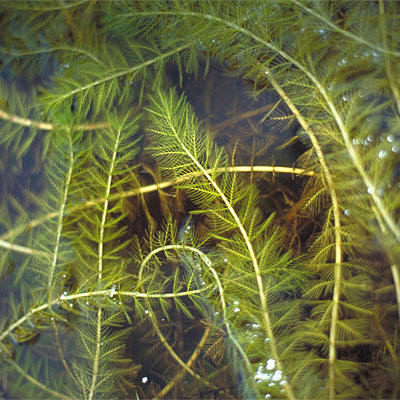
Eurasian Water Milfoil has become a problem throughout the US with extensive stands reported in the Chesapeake Bay, TVA Lakes, and several areas in Florida. This submersed forming perennial remains green during winter and occurs throughout Alabama in both fresh and brackish waters. It forms dense mats that replace native plants and prevents light penetration causing fish habitat destruction. It spreads by plant fragments hitch-hiking on boats and trailers, but also produces seeds.

 Hydrilla (Hydrocharitaceae)
Hydrilla (Hydrocharitaceae)
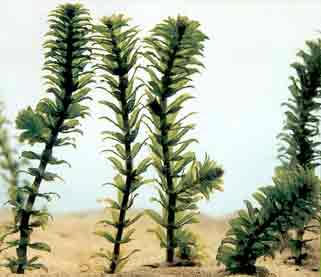
Hydrilla, a plant native to Africa, is presently the most threatening plant species in the aquatic environment. Its ability to out-compete all other aquatic plant species both natural and exotic for available habitat makes it a real danger to aquatic systems. Dense surface mats of hydrilla crowd out native plants and cause reduced oxygen conditions unsuitable for fish. The mats interfere with water flow, drainage, navigation, and often harbor mosquitoes.

 Water hyacinth (Eichhornia crassipes)
Water hyacinth (Eichhornia crassipes)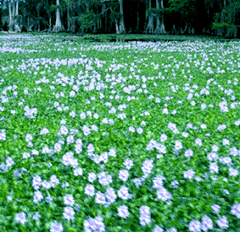
Water hyacinth is a floating plant and is a invasive nuisance in much of the world where it often jams rivers and lakes with uncounted thousands of tons of floating plant matter. A healthy acre of water hyacinths can weigh up to 200 tons.
This plant grows in all types of freshwaters. It varies in size from a few inches to over three feet tall. They have showy lavender flowers with leaves that are rounded and leathery, attached to spongy and sometimes inflated stalks. It also has dark feathery roots.